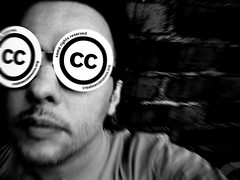'21st century literacy is the set of abilities and skills where aural, visual and digital literacy overlap. These include the ability to understand the power of images and sounds, to recognize and use that power, to manipulate and transform digital media, to distribute them pervasively, and to easily adapt them to new forms.' 21st Century Literacy Summit (2005)
Manipulation and use of digital images is a large part of the skill set needed for 21st century literacy and this week, I continued to expand my knowledge in this most stimulating and thought provoking art.
Well, it is Week 4 and I am working my way through the readings and activities in not quite a sequential pattern. I have finally downloaded MobaPhoto and resized a recent photo of myself in a more relaxed time. This software was easy to use and download and I do see a big advantage having it on a USB stick. What would we do without those marvelous devices!
On to Flickr! Setting up the account was easy, and there are many beautiful images to spend many hours admiring. I did not find it easy figuring out which images could be used and how to attribute them so I have added this useful link for anyone who wants more information on attributing Creative Commons Works http://www.dartmouth.edu/~ahrc/resources/ccattribute.html.
Images are just so important to all learning experiences that we just cannot do without them. Visualising plays a crucial part in comprehension, so the visual and making meaning from what we can see is an essential part of all learning experiences.

creative commons -Franz Patzig- by A. Diez Herrero
Licenced under a Creative Commons Attribution-NonCommercial-ShareAlike
2.0 Generic (CC BY-NC-SA 2.0)
The See Think Wonder thinking routine is ideal for making observations and interpreting them. It is useful in many contexts but particularly useful with imagery and art.
What do you see?
What do you think about that?
What does it make you wonder?
This thinking routine needs direction by the teacher to focus the students on the details and not to focus on the big picture and may take some practice and modelling to fully achieve deep analysis. However, with practice, this thinking routine creates higher order thinking opportunities of analysis, interpretation and inferencing. Further information is available at http://www.pz.harvard.edu/tc/see_think_wonder.cfm.
As more time presents I will add to this discussion of digital imagery and visuals as I believe it is the basis of most ICTs and most learning experiences.
I am hoping to explore picnik and will upload my creation during the week.
31/3/11 Just briefly....
Loved using Picnik! With a little time, you could achieve some interesting effects and I am sure students would unleash their creativity using this website. I liked (see) the alien look of this photo (below) with the glaring blue sunlight and freakish green grass, the woman looks a little out of place almost superimposed. I think that the grass sometimes looks this green just after a thunderstorm when the atmosphere is bathed in a different almost unearthly light. I wonder 'where did you come from? what planet are you on? ...I think I'm on the same planet as you,' (see "Planets" by Short Stack ) and I also wonder what is the exact physics/atmospheric changes are behind that very unusual light after a thunderstorm.
I am hoping to explore picnik and will upload my creation during the week.
31/3/11 Just briefly....
Loved using Picnik! With a little time, you could achieve some interesting effects and I am sure students would unleash their creativity using this website. I liked (see) the alien look of this photo (below) with the glaring blue sunlight and freakish green grass, the woman looks a little out of place almost superimposed. I think that the grass sometimes looks this green just after a thunderstorm when the atmosphere is bathed in a different almost unearthly light. I wonder 'where did you come from? what planet are you on? ...I think I'm on the same planet as you,' (see "Planets" by Short Stack ) and I also wonder what is the exact physics/atmospheric changes are behind that very unusual light after a thunderstorm.
References
A Global Imperative, A report of the 21st century literacy summit, 2005
Retrieved from http://archive.nmc.org/pdf/Global_Imperative.pdf


No comments:
Post a Comment